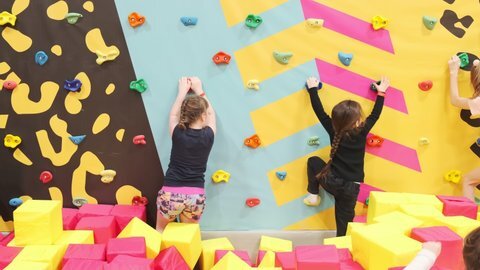- 1-905-452-8193
- Contact Us
- Member Login
- Get Listed Today
- 220,911 members

If you're looking for an exciting playground to keep your kids entertained, look no further than a climbing playground! These unique structures are perfect for active youngsters who love to explore and play.
According to playground equipment owner Anthony Swain, designing a climbing playground can be a fun and challenging task. It is important to ensure that the equipment is safe for children to use and also encourages exploration and physical activity. By following a few simple tips, you can create a fun and challenging climbing area for children of all ages.
Here are some useful design tips to get you started on building the ultimate play area for kids and kids-at-heart!
1. Choose the right location: The location of your climbing playground is important, as you will need plenty of space to fit all the equipment. It is also important to consider the surrounding environment, as you will want to make sure that the area is safe and free from hazards such as traffic or other dangers.
2. Plan the layout: Once you have chosen the location, it is time to plan out the layout. This will depend on the age group of children who will be using the playground, so make sure to consider the different abilities and levels of children who will be playing.
3. Use a variety of equipment: A climbing playground is more fun for children if it has a variety of equipment. This could include things like ladders, jungle gyms, ropes, and slides.
4. Design the play area in a way that kids will be challenged: It is important to make the climbing playground challenging enough that children will want to keep using it, but not so difficult that they get frustrated. You can do this by using different heights and obstacles in the design.
5. Add some colour: Children are more likely to use a climbing playground if it is brightly coloured. This will add to the fun atmosphere and also make the playground easier to see from a distance.
6. Keep it safe: One of the most important things to consider when designing a climbing playground is safety. Make sure that all the equipment is sturdy and properly installed, and that there are no sharp edges or hazardous surfaces.
7. Install a fence: A fence around the climbing playground will help to keep children safe and also provide a sense of enclosure which can make the playground feel more like a fun place to play.
8. Add some seating: Seating is important for parents who want to watch their children play, as well as for children who need a break from climbing. Seating can also add to the overall look of the playground.
9. Provide shade: Even if the play area is best set up indoors, it is important to provide shade for children who will be playing in the climbing playground during those hot, sunny days. This can be done with a pergola or some other form of shelter.
10. Add a relaxation area: A small rest area next to the climbing playground can add to the fun and give children a place to relax after they have finished climbing. This could include things like swings, a slide, and a sandpit.
11. Make it accessible: It is important to make the climbing playground accessible for all children, including those who use wheelchairs or have other disabilities. This can be done by adding ramps and wheelchair-accessible equipment.
12. Install signage: Signs that explain how to use the equipment can be helpful for both parents and children.
13. Keep it tidy: It is important to keep the climbing playground tidy, so make sure to have a bin or storage area for rubbish and recycling.
14. Regularly check the equipment: It is important to check the equipment in the climbing playground regularly for any signs of wear and tear, and to fix any problems as soon as they are noticed.
By following these tips, you can create a fun and challenging climbing playground for children of all ages. With a little planning and creativity, your climbers will have a blast exploring every nook and cranny of your design!
